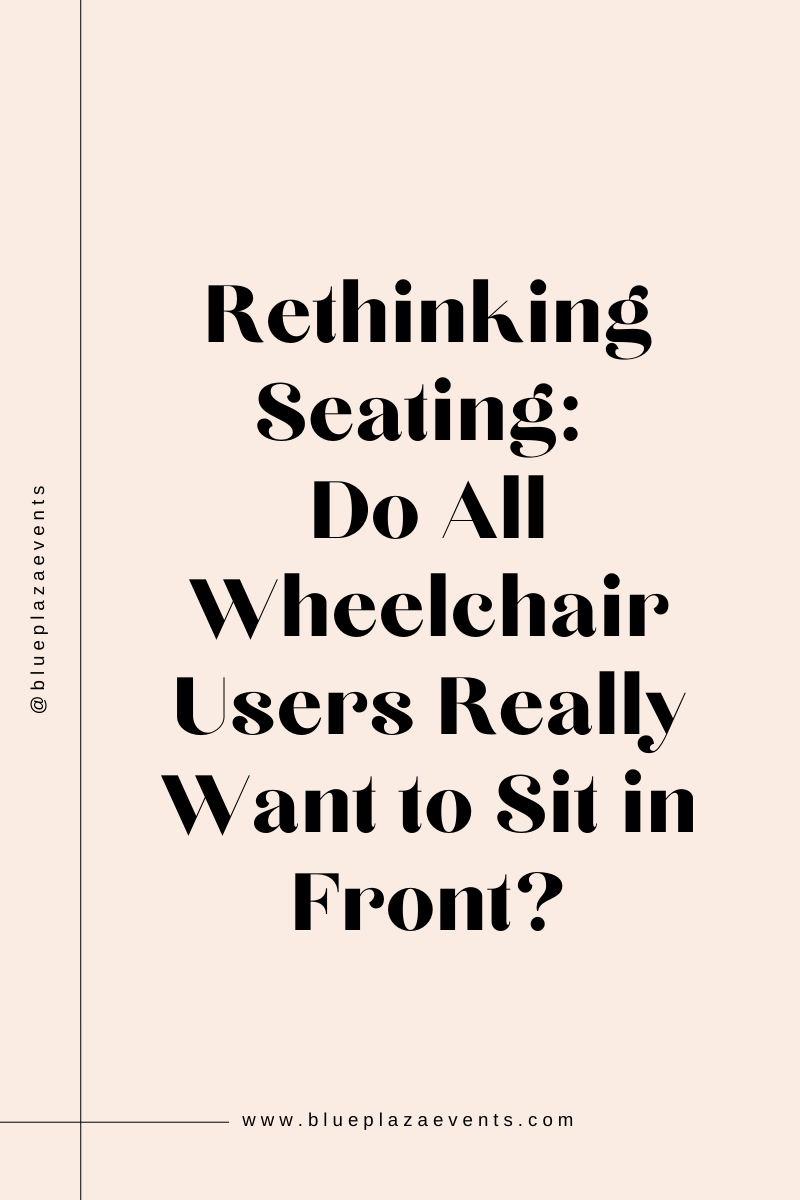
Rethinking Seating: Do All Wheelchair Users Really Want to Be in the Front?
September 7, 2025
When you walk into a room, you probably have a preference for where you want to sit. Some people head straight for the front row. Others feel more comfortable in the middle, or tucked away in the back. Personally, I like sitting in the back. I’m a fidgeter, and having that space lets me move around without feeling disruptive.
Now imagine you use a wheelchair, and the front row is your only option.
As event professionals, we often place accessible seating at the front. The intention is good. We want to make sure people have a clear view. But here’s the thing: accessibility isn’t just about access; it’s about choice.
The Power of Choice
Everyone else in the room has choices about where to sit. Attendees using wheelchairs or with other accessibility needs deserve that same opportunity. Not everyone wants to be right up front. Some may prefer the aisle, the back, or a spot in the middle.
And it’s not just wheelchair users. Think about attendees with low vision, those who are Deaf or hard of hearing, or people with invisible disabilities like sensory sensitivities. Each person has unique needs and preferences—and seating options should reflect that.
Practical Ways to Rethink Accessible Seating
Here are some strategies to create more inclusive environments:
-
Offer variety. Make sure accessible seating is available in multiple locations: the front, the middle, the aisle, and the back.
-
Companion seating matters. If someone attends with a friend, family member, or support person, don’t separate them. Companion seating should always be standard.
-
Think about movement. Adding high-top tables or counter seating at the back gives people who prefer standing or fidgeting a comfortable option.
-
Provide guidance. Train staff and volunteers to help attendees find these zones, or use clear signage so people know where they are.
-
Quiet zones. Consider offering a low-stimulation area for attendees with sensory sensitivities. This isn’t about putting people “in the corner”, it’s about giving them the option.
Final Thought
Inclusion isn’t one-size-fits-all. It’s about designing spaces that respect individual preferences and provide equal choices for everyone. When we rethink seating this way, we create events that feel welcoming, thoughtful, and truly accessible.
PLEASE COMMENT BELOW